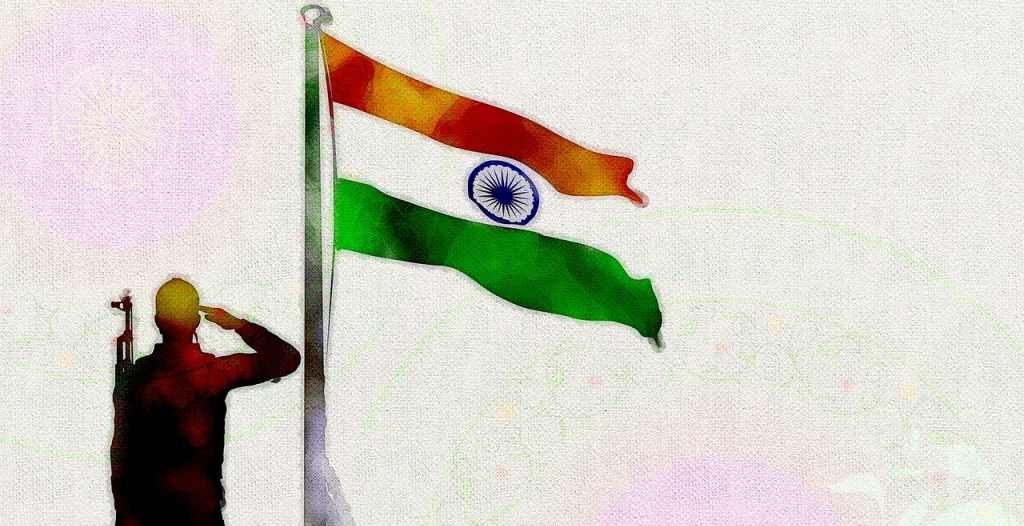Indian Polity is a diverse topic. To prepare for the same, one must have in-depth knowledge of the Indian Constitution and its essential features. This article will discuss the Indian Constitution – Salient features of Indian Constitution, Features of Democracy, Preamble of Indian Constitution, amongst other things. Despite the syllabus changes over the years, Indian Polity’s scope has been central in UPSC exams.
Polity’s weightage in the UPSC prelims saw a spike after 2016, before which it was reasonably steady. In 2017, the numbers shot up when 22 out of 100 questions came from this topic. On average, aspirants can also expect 13-14% of questions coming from Polity.
What Is the Constitution of India?
The Indian Constitution is unique, both in content and spirit, and came into force on 26th January 1950. At the time, it contained 395 articles, eight schedules, and was about 1,45,000 words long. One of the lengthiest constitutions in the world, it has 395 articles and 12 schedules with more than 80 amendments at present.
A highly influenced constitution, a lot of the features of the Indian Constitution come from different nations. For instance, the Parliamentary system came from Britain while the federal system was taken from the U.S constitution.
Some of India’s other influences include the constitutions of Ireland, France, Australia, and Canada, amongst others. When weaved together, these became essential features of the Indian Constitution.
Although numerous constitutions of the world influenced it, India’s Constitution is undoubtedly unique and holds its own compared to its counterparts.
Also Read : Can IAS Officers Go Abroad for Holiday? UPSC IAS Officer Holiday Rules
Important Features of Indian Constitution
-
Parliamentary System:
A Parliamentary system is based on the principle of cooperation and coordination between the legislature and the executive. It is also known as a cabinet form of governance. It applies to the center as well as the states.
In such a system, the head of the state is ordinarily different from the head of government. In the Indian parliamentary system, a distinction is made between the nominal and real executive head. The lower house of the union parliament is the Lok Sabha, while the Upper house is the Rajya Sabha.
The President is the union executive’s constitutional head, but he exercises power under the Union Council of Ministers’ advice. Thus, the real executive power vests with ministers’ council, with the prime minister.
A solid blend of rigidity and flexibility, the Indian Parliament can amend some of the Constitution’s provisions with a simple majority.
In contrast, some amendments require a special majority in both houses to get passed. At the same time, some provisions cannot be amended by the Parliament alone.
-
Preamble:
The preamble of the Indian Constitution consists of the ideals, principles, and objectives of the same. It’s usually described as a preface or an introduction of a book.
The Indian Constitution’s preamble declares India as a Sovereign, Socialist, Secular, Democratic republic state.
Another objective of the preamble is that it lays down the provisions to all the citizens of India. They are as follows:
- Provision for Liberty of thought, expression, belief, faith, and worship.
- Provision for equality of status and opportunity.
- Provision for Social, Economic, and political justice.
- The fraternity assures the dignity of an individual and the unity and integrity of the nation.
-
Fundamental Rights and Duties:
The Indian Constitution grants and guarantees Fundamental Rights to all its citizens. Initially, there were seven fundamental rights, but after the 44th Amendment Act, 1979, Right to Property was removed from the list, leaving a total of six.
Fundamental Rights
The fundamental rights of the Indian Constitution are covered under articles 14 to 32. The right to equality provides equality before the law, while the Right to Freedom aims to safeguard personal freedom and protection. The right against exploitation forbids the sale and purchase of human beings and forced labor.
Rights like the Right to freedom of Religion and Cultural and educational rights provide every religion or faith the privilege to establish their institutions and guarantee minorities the Right to maintain their culture and educational institutions.
Lastly, the Right to constitutional remedies provides for the enforcement and protection of the courts’ fundamental rights.
Fundamental Duties
Fundamental Duties came into effect after the 42nd amendment, 1976 as a new part of IV (A) after the directive principles of state policy were added were combined in the Constitution.
They include duties like abiding by the Constitution, protecting India’s sovereignty and unity, Valuing and preserving our composite culture, defending public property, and more.
The main goal behind integrating these duties in the Constitution was to remind the citizens that they should also give back to the country by upholding them while enjoying their rights.
-
Judicial Review:
In the Indian Constitution, the Judiciary holds a significant position. It is an independent body. At the peak of the Indian Judicial system stands the Supreme court.
It defends the fundamental rights of Indian citizens and operates as the guardian of the Constitution. The judicial system of India follows a hierarchical order. At the highest position is the Supreme Court, followed by the High courts at the state level, and district court at the district levels.
The decisions of the Supreme court are bound to be followed by all the courts. An independent Judiciary ensures that the rights of People are protected. The Supreme court judges stay in office still 65 years of age, while High court judges stay 62 years of age.
If any law passed by the legislature or action taken by the executive goes against the Constitution’s provisions, the Supreme Court can declare it null and void. It is due to this autonomy and lack of bias that an independent judiciary is needed.
-
Directive Principles:
The Indian Constitution comprises a chapter in the state policy. These principles are like directives to the government to implement them to maintain social and economic democracy in the country.
It epitomizes important philosophies like equal pay for men and women, distribution of wealth to serve the common good, compulsory and free primary education, Right to work, adequate means to livelihood, public assistance in old age, organization of village panchayats, superior care for the economically disadvantaged and more.
Most of these principles add to the welfare state status of India. These principles are fundamental in the democratic governance of a country.
Conclusion
The Constitution of India is an embodiment of democracy, decentralization of power, and fundamental rights, amongst other things. The Judiciary acts as its guardian and protects the people of the country while fighting against any wrongdoing.
The directive principles further add to the welfare of the country and promote equality. While the Preamble highlights the ideals, principles, and objectives that the Constitution is built upon.
Stay tuned for various upcoming blogs to enhance your knowledge about the Indian constitution and UPSC examination.
Also Read : UPSC Geo-Scientist 2021 Syllabus: Combined Geo-Scientists and Geologists Examination







Thank you for providing detailed information about current affairs, as we know the news is a great source where actually get the info, can you also help with some good books too?